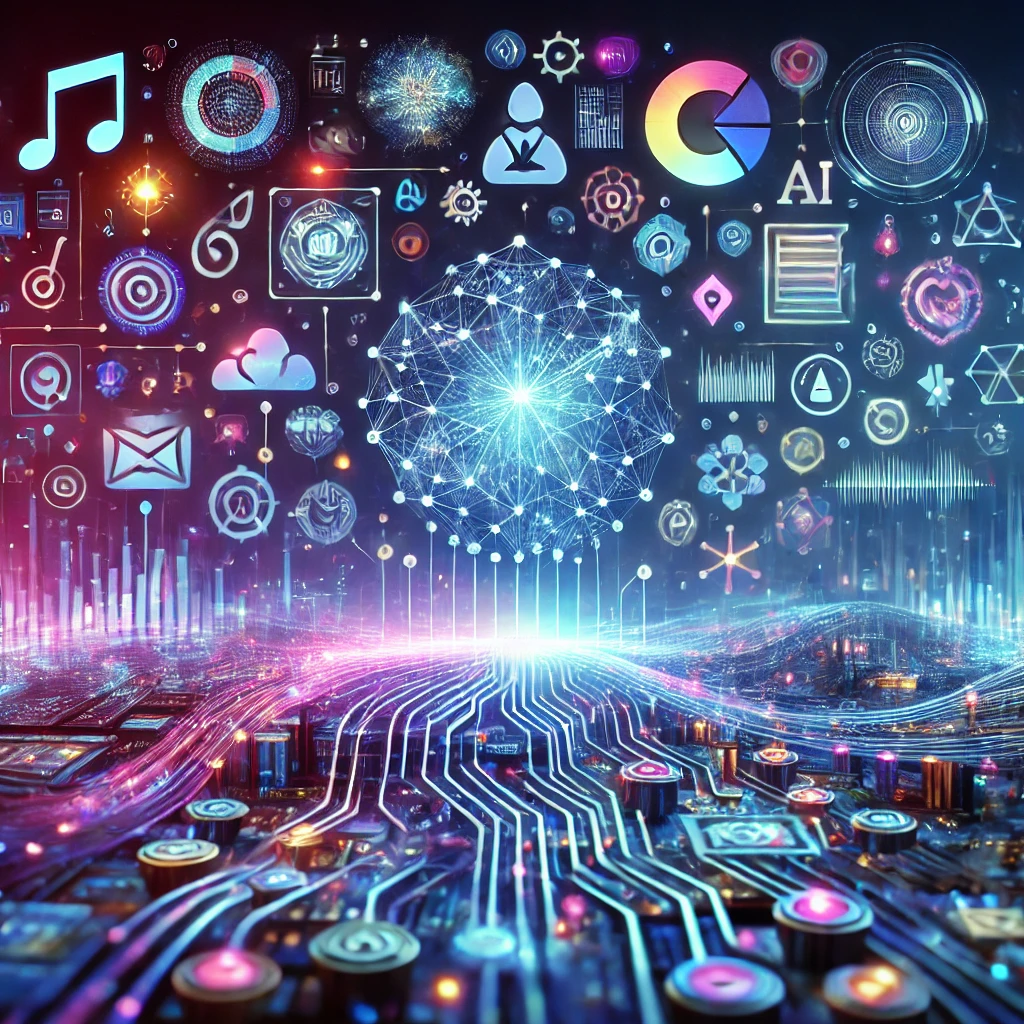
Artificial intelligence (AI) has advanced significantly in recent years, and one of the most exciting areas is Generative AI. Unlike traditional AI, which typically analyzes or processes existing data to make predictions or decisions, generative AI goes a step further by creating new data—such as text, images, and even music—that did not previously exist. But what exactly is generative AI, and how is it shaping industries from entertainment to healthcare? In this article, we’ll delve into the core meaning of generative AI, its transformative applications, and how platforms like AIPasso make accessing multiple AI models easier than ever.
What is Generative AI?
Generative AI refers to algorithms that create new, often highly realistic content based on the data they’ve been trained on. This type of AI relies on deep learning and neural networks, which are complex structures modeled after the human brain's function. Through exposure to large datasets, generative AI systems can recognize patterns, contexts, and relationships, allowing them to produce new content that fits seamlessly with the data they were trained on. Generative AI isn't merely duplicating or replicating information; it's about producing new, innovative outputs that feel original.
How Does Generative AI Work?
Generative AI typically uses Generative Adversarial Networks (GANs) or Transformer-based models to function. Here’s a breakdown of each:
-
Generative Adversarial Networks (GANs): GANs are designed with two neural networks—a generator and a discriminator—that work against each other. The generator creates new data, while the discriminator evaluates it against real data to decide if it's authentic. Over time, the generator gets better at creating content that looks genuine, which is why GANs are popular in creating realistic images and art.
-
Transformer Models: Transformer models, such as GPT-4, operate differently by using attention mechanisms to understand and generate sequential data like text. Trained on vast amounts of written content, these models can produce coherent sentences, paragraphs, and even complete articles that are contextually relevant and accurate.
The application of these two techniques has allowed generative AI to reach incredible levels of sophistication, making it possible to generate everything from conversational responses to high-quality digital art.
Real-World Applications of Generative AI
Generative AI’s versatility has led to a variety of practical applications across industries:
-
Content Creation
Generative AI tools can produce written content, making them highly valuable in industries that rely on content generation, like marketing, journalism, and entertainment. For example, businesses use AI to write articles, social media posts, and ad copy. -
Art and Design
From logos to digital art, generative AI enables artists and non-artists alike to create visual content. Platforms like DALL-E and Stable Diffusion allow users to turn text prompts into unique images, while others offer style-transfer options to enhance creativity. -
Personalized Recommendations
Generative AI can use a customer’s browsing habits to produce tailored recommendations, improving customer experience by predicting and creating personalized suggestions. This technology is commonly used in e-commerce and entertainment. -
Healthcare
In healthcare, generative AI is revolutionizing drug discovery and diagnostics. By creating simulations and analyzing patterns in patient data, AI assists researchers in identifying potential treatments and solutions faster than traditional methods. -
Gaming and Entertainment
Generative AI can develop new game levels, characters, or storylines, providing gamers with immersive and interactive experiences. It’s also used in animation and special effects, saving time and enhancing creativity.
The Benefits of Using Generative AI
Generative AI is transforming how we interact with technology and create content. Here are some key advantages:
- Increased Productivity: AI can automate repetitive tasks, freeing up time for more creative and strategic work.
- Enhanced Creativity: With generative models, even non-experts can create unique art, music, and text, breaking down barriers to creativity.
- Cost-Efficiency: Generative AI can save costs on creative processes, as businesses no longer need extensive resources to produce high-quality content.
- Scalability: Since AI can quickly learn and adapt, it allows businesses to scale their content production without significant delays.
Why Use AIPasso for Generative AI?
If you're ready to explore generative AI, AIPasso offers access to multiple powerful models in a single platform. With ChatGPT, Claude, and Gemini for text generation and tools like Midjourney for image creation, AIPasso combines leading generative AI models in one easy-to-use, cost-effective solution. Whether you're a content creator, business owner, or developer, AIPasso streamlines your AI needs, helping you make the most of what generative AI has to offer.
AIPasso is designed for everyone, from beginners to experts, offering an intuitive interface that simplifies navigating multiple models. You no longer need to juggle between various tools—AIPasso is your all-in-one AI solution, designed to drive creativity, efficiency, and innovation.